| HOME |
|---|
DORADO
The Dolphinfish
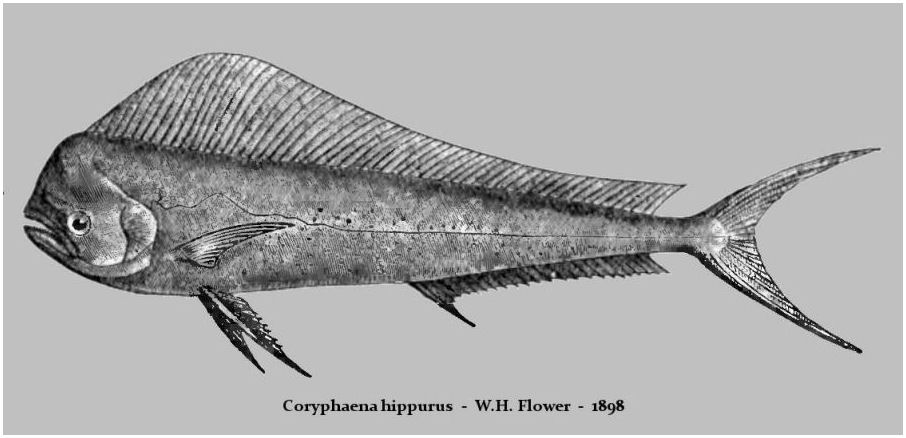
Dorado (Dolphinfish) - Coryphaena hippurus - W. H. Flower - 1898
| HOME |
|---|

Dorado is a southern constellation not visible north of 16 degrees north latitude. It's title is the Latin name for the dolphinfish (Coryphaena hippurus), widely known as the mahi mahi, a large, predatory, blunt-nosed fish abundant in tropical waters, and prized for its flavourful meat. In life a brilliant rainbow of pastel greens, blues, and yellows, its skin quickly fades to a dull grey out of the water. Its figure was one of twelve southern constellations added by Dutch-Flemish astronomer, Petrus Plancius, and as you can see in the star chart below, the stars really do form the shape of this distinctive fish.
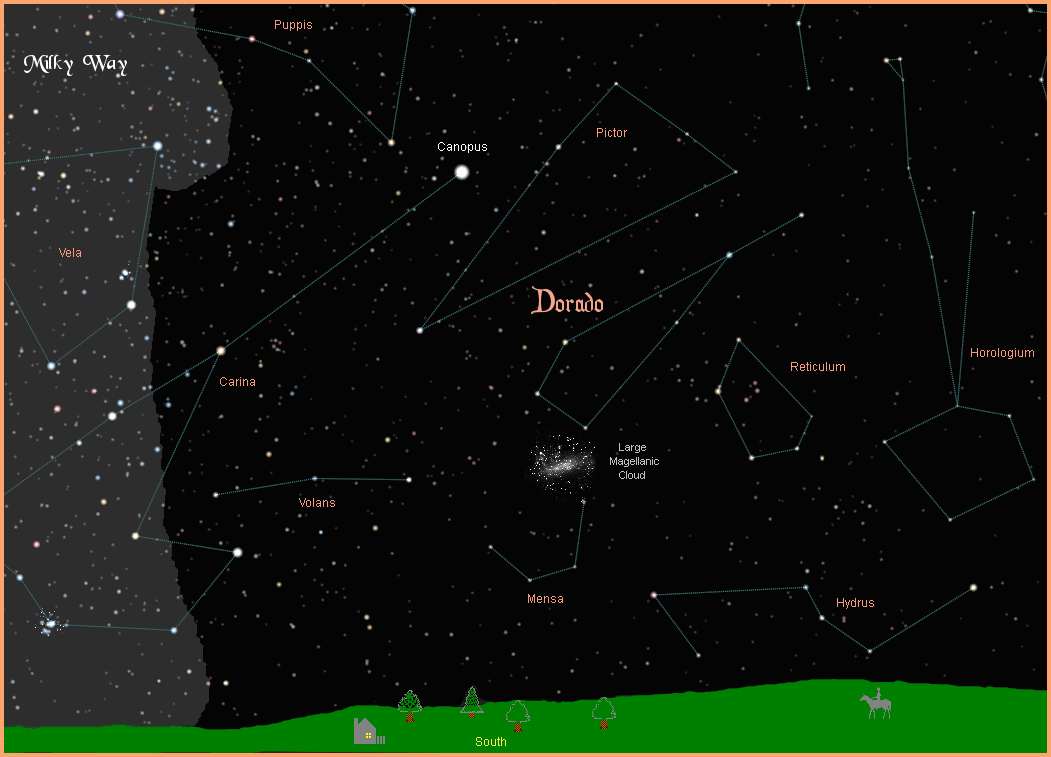
There are no named stars in Dorado. Alpha Doradus is the luminary (brightest star) of the constellation at magnitude 3.27. It is a binary system about 170 light years away. The primary is an A0III blue/white giant, magnitude 3.8, and the companion is a B9V blue/white main sequence star, only slightly smaller and dimmer at magnitude 4.3. The pair are about one billion miles apart (9.7 AU), and orbit each other every 12 years.
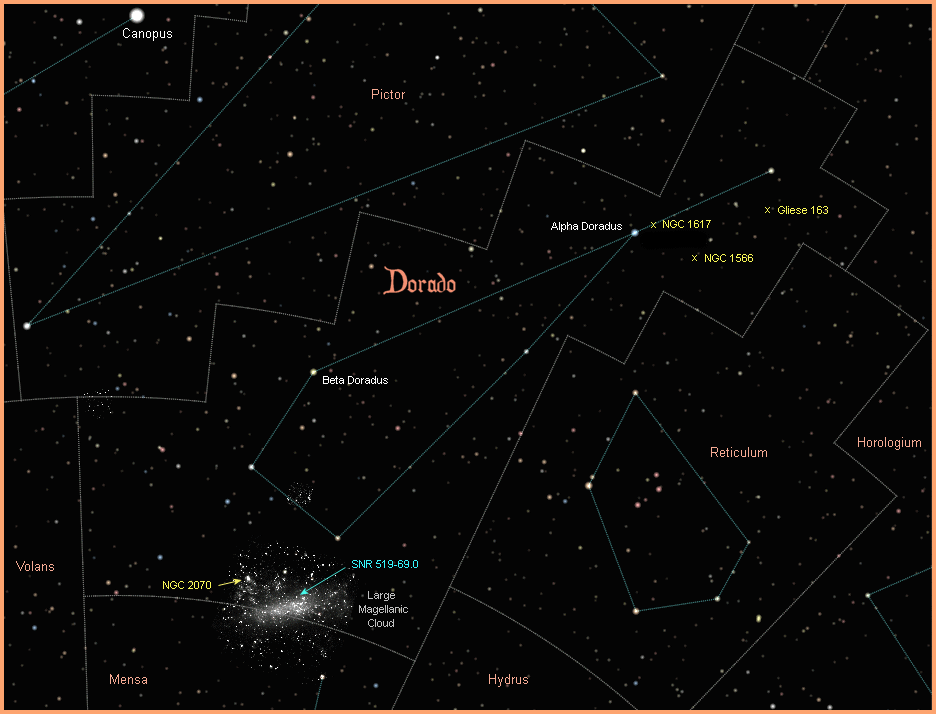
With an average magnitude of 3.76, Beta Doradus is the only other star in the constellation over fourth magnitude. It is classified as a Cepheid Variable, a star with regular luminosity shifts that can be used to calculate its size and distance. In this case the star is over a thousand light years away, and regularly changes from an F4 yellow supergiant with a magnitude of 3.45, to a G5 yellow giant with a magnitude of 4.50, and it does so every 9.842 days.
Dorado has four stars that we know support planets. Three of the stars are very far away and too dim to see with the naked eye, and host the usual unremarkable gas giant planets. One star however, is different. Designated Gliese 163, it is relatively close at a distance of 48.8 light years, and has three super earth planets just a few times larger than Earth.
Gliese 163 is an M3V red main sequence star, only half as hot as our Sun, which leaves it with a magnitude of only 11.81, despite its close proximity. The star's cool temperature of 3,500 degrees K also means the habitable zone for planets is much closer than with a hotter star like our Sun. The cool red sun of Gliese 163 has at least one super earth orbiting in the habitable zone, increasing the probability of life existing, and makes the Gliese system something to keep your eye on. For more information on these and other extrasolar planets, visit NASA's New Worlds Atlas, and The Open Exoplanets Catalogue.
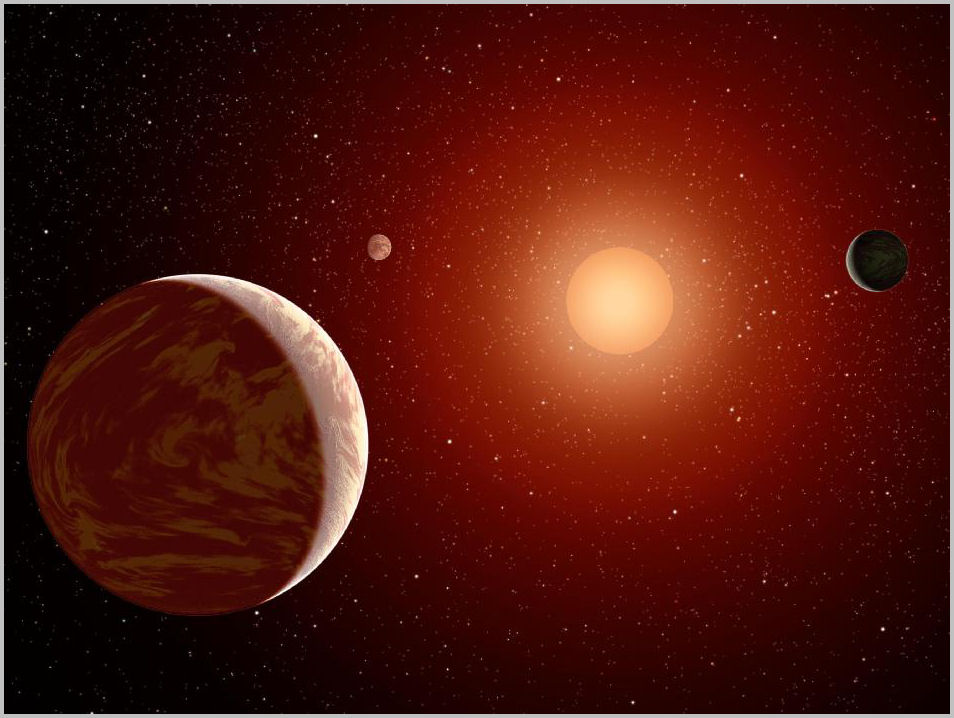
Because Dorado is not visible north of 16 degrees north latitude, northern observers miss out on one of the most impressive sights in the night sky: the Large Magellanic Cloud (LMC). The LMC is an irregular dwarf galaxy considered to be a satellite of our much larger Milky Way Galaxy. The LMC is 14,000 light years across, and spills into the adjacent constellation of Mensa.
In the photo below, both the Large Magellanic Cloud and its smaller southern sibling the Small Magellanic Cloud are caught hanging in the predawn sky above the European Southern Observatory's Very Large Telescope (VLT) array, 8,500 feet (2,600 m) high in the Andean mountains. The LMC sits prominently in the upper left center, with the fainter SMC slightly lower in the right center of the image.
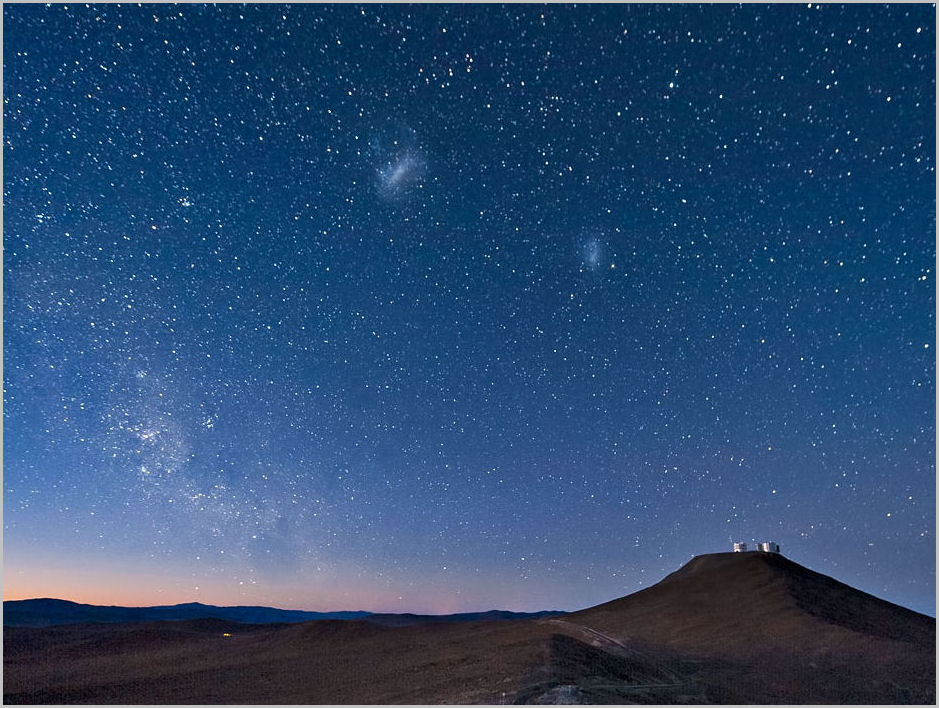
The Large Magellanic Cloud is 160,000 light years away, making it one of the most distant objects visible with the naked eye. Still, it is relatively close as far as galaxies go, and is in fact the closest observable galaxy to Earth, providing a unique opportunity for astronomers to examine the dynamics at work inside a galaxy. The LMC has been studied closely, and much has been discovered, including 60 globular clusters, 400 planetary nebulae, and 700 open star clusters. The composite image below, compliments of the European Southern Observatory high in the Andes, is a small sampling of the treasures inside the LMC.
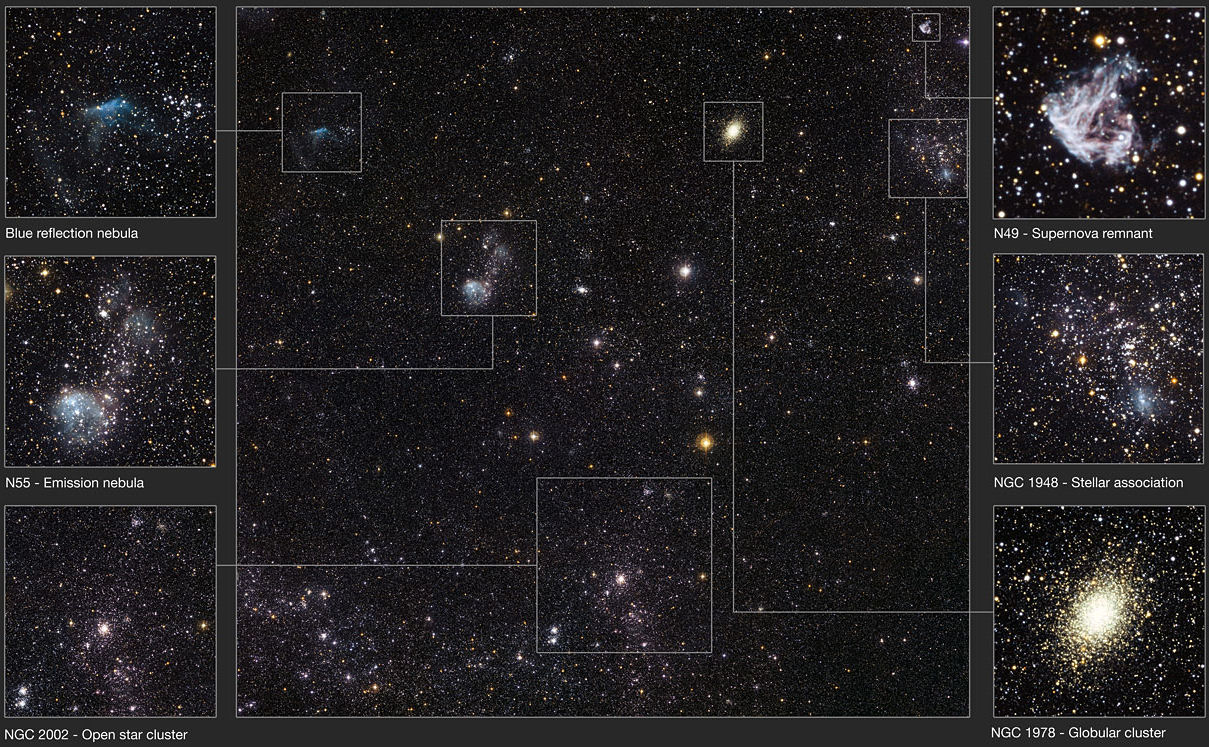
The largest and most impressive object inside the LMC is NGC 2070, The Tarantula Nebula, so conspicuous that until 1751 it was considered a star, and still carries the star designation of 30 Doradus. It is in fact an immense nebula, 1,000 light years across, filled with the fury and violence of star formation, safely 160,000 light years away. The nebula has an apparent magnitude of 8.0, and is a good target for a small scope.
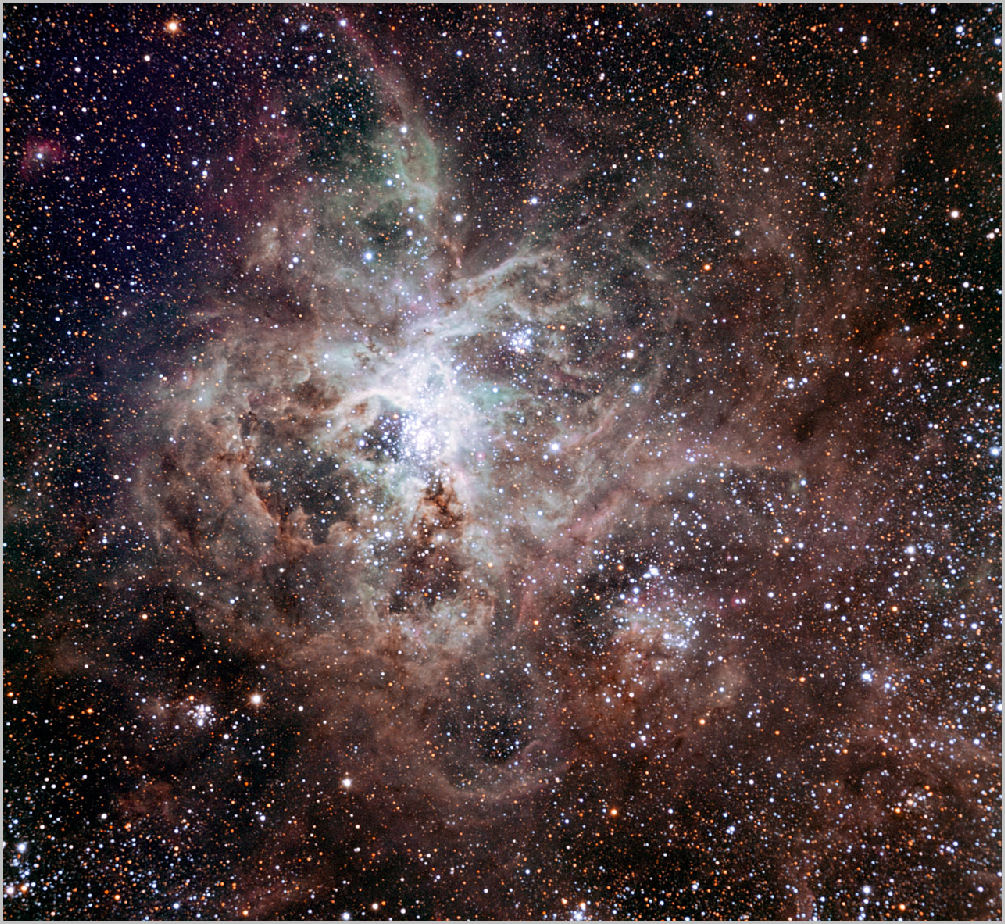
Also inside the LMC is the supernova remnant SNR 0519-69.0, an expanding cloud of superheated gas caused by the explosion of a giant star.
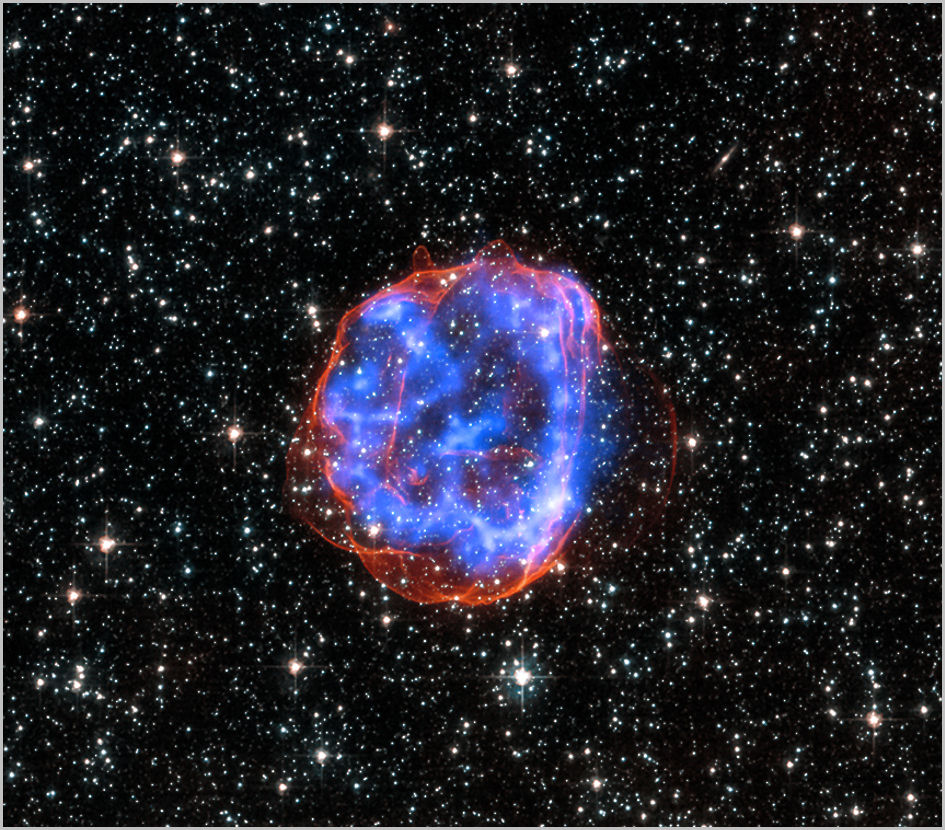
On the western side of the constellation is a cluster of far away galaxies known as the Dorado Group. The group contains about 70 galaxies 40 to 60 million light years away. The brightest of these is NGC 1566, a spiral galaxy about 40 million light years away with a magnitude of 9.7.
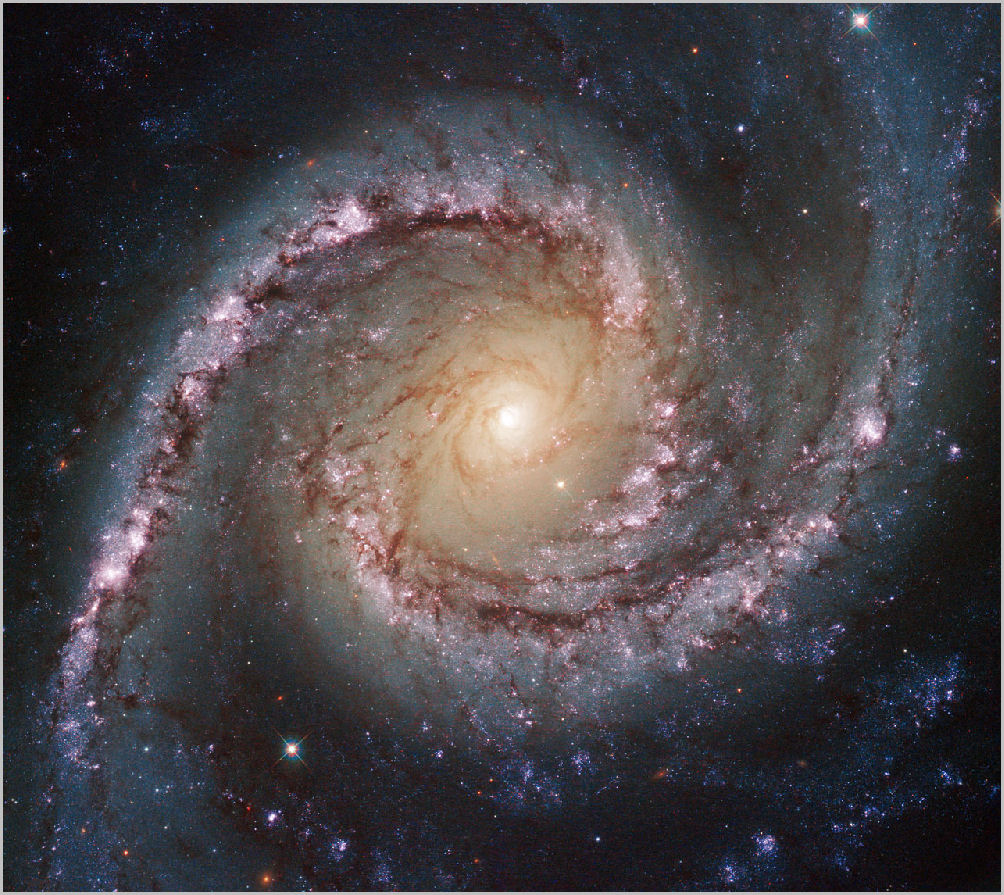
Almost as bright at magnitude 10.0 is barred spiral galaxy NGC 1672. Classified as a "Seyfert galaxy" with a hot, active nucleus, it is about 60 million light years away.
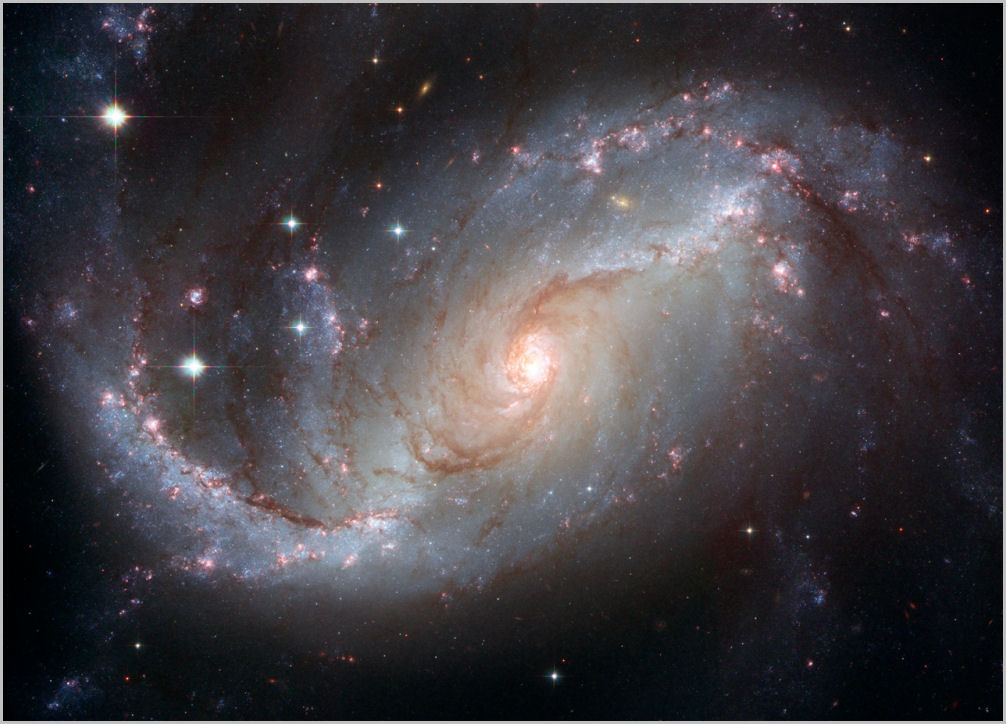
|
|
|
|
|
|